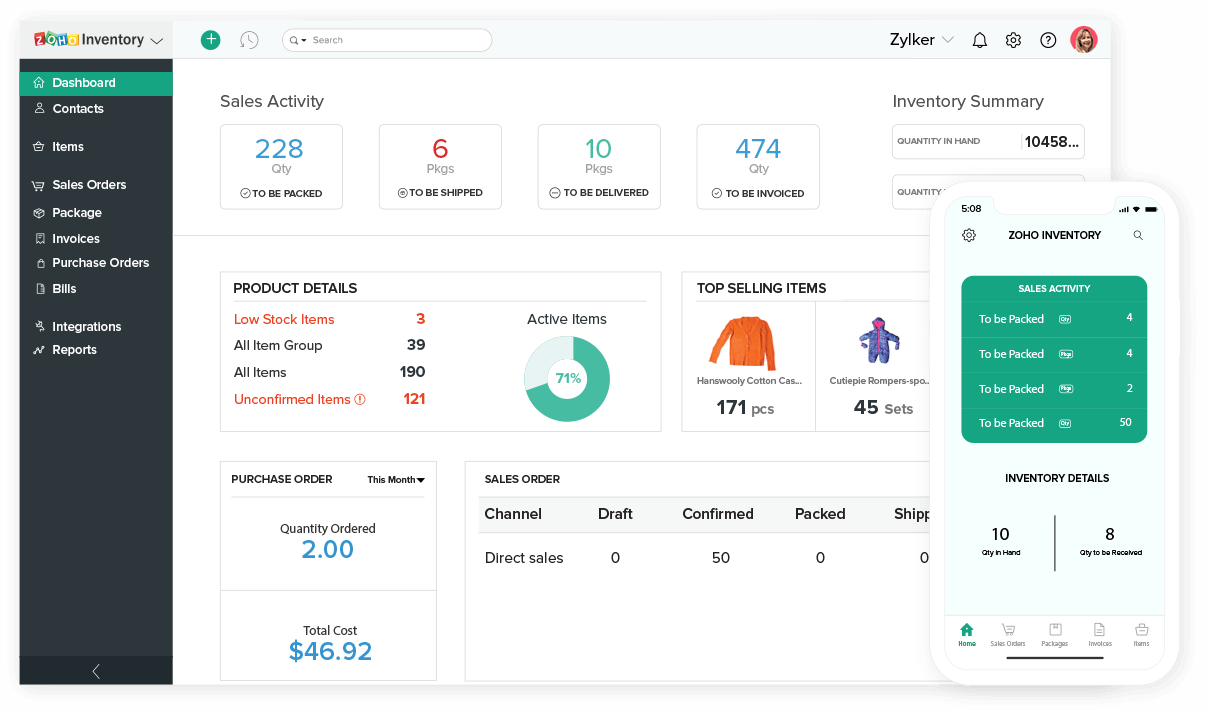
Mastering the Flow: A Comprehensive Guide to Business Inventory Software
In the fast-paced world of modern commerce, inventory is the lifeblood of nearly every business, from small e-commerce startups to sprawling multinational manufacturers. Managing this crucial asset, however, is a complex balancing act. Too much inventory ties up capital and risks obsolescence; too little leads to stockouts, missed sales opportunities, and frustrated customers. This delicate equilibrium is precisely where business inventory software steps in, transforming what was once a chaotic, error-prone manual process into a streamlined, data-driven operation.
This comprehensive guide will delve into the essence of business inventory software, exploring its critical role, core functionalities, undeniable benefits, different types, and key considerations for choosing the right solution. We will also cast an eye towards the future, examining how emerging technologies are shaping the next generation of inventory management.
The Crucial Role of Effective Inventory Management
Before diving into the software itself, it’s vital to understand the profound impact of inventory management on a business’s bottom line and operational efficiency. Poor inventory practices can lead to a cascade of problems:
- Financial Drain: Excessive inventory incurs significant carrying costs (storage, insurance, spoilage, obsolescence) and ties up valuable working capital that could be invested elsewhere.
- Lost Sales & Customer Dissatisfaction: Stockouts mean customers turn to competitors, damaging reputation and losing revenue.
- Operational Inefficiencies: Manual tracking leads to errors, wasted time searching for items, and inefficient order fulfillment.
- Lack of Visibility: Without clear insights, businesses cannot accurately forecast demand, leading to either overstocking or understocking.
- Compliance Issues: In regulated industries, inaccurate inventory records can lead to fines and legal complications.
Effective inventory management, conversely, optimizes cash flow, enhances customer satisfaction, boosts operational efficiency, and provides a clear competitive edge. It’s about having the right product, in the right quantity, at the right time, and at the right cost.
What Exactly is Business Inventory Software?
Business inventory software is a digital tool designed to automate, track, organize, and optimize a company’s stock from the point of purchase from suppliers to the point of sale to customers. It acts as a central nervous system for all inventory-related activities, providing real-time visibility and control over goods across multiple locations, warehouses, or sales channels.
At its core, the software aims to minimize manual effort, reduce human error, provide actionable insights, and ensure that businesses maintain optimal stock levels to meet demand without incurring excessive costs.
Key Features and Functionalities
Modern inventory software is packed with features designed to address every facet of inventory management. While specific functionalities may vary between platforms, common capabilities include:
-
Real-time Stock Tracking and Visibility: This is arguably the most fundamental feature. The software provides an up-to-the-minute view of stock levels for every item, across all locations. Utilizing barcodes, QR codes, or RFID tags, items are scanned at every touchpoint (receipt, transfer, sale), ensuring data accuracy and eliminating manual counting errors. This real-time data is crucial for preventing stockouts and overstocking.
-
Purchase Order Management: This feature streamlines the procurement process. Businesses can generate, track, and manage purchase orders (POs) to suppliers. The software can often automate PO creation based on predefined reorder points or forecasted demand, ensuring that stock is replenished proactively. It also helps track supplier performance and manage incoming shipments.
-
Sales Order and Fulfillment Management: From the customer’s perspective, this ensures smooth order processing. The software integrates with sales channels (e-commerce platforms, POS systems) to receive orders, allocate stock, generate packing slips and shipping labels, and track the order through to delivery. It helps prioritize orders, manage backorders, and provide accurate shipping estimates.
-
Warehouse Management Capabilities: For businesses with physical storage, these features are invaluable. They include bin location tracking (knowing exactly where each item is stored within a warehouse), optimized picking routes for efficient order fulfillment, cycle counting, and even support for cross-docking operations. Some advanced systems offer full-fledged Warehouse Management System (WMS) functionalities.
-
Reporting and Analytics: This is where raw data transforms into actionable insights. Inventory software generates a wide array of reports, including:
- Stock Levels: Current quantities, reorder points, safety stock.
- Sales Trends: Historical sales data to identify seasonal patterns and best-selling products.
- Inventory Turnover: How quickly inventory is sold and replaced.
- Cost of Goods Sold (COGS): Essential for financial reporting.
- Demand Forecasting: Predictive analytics using historical data and external factors to anticipate future demand, helping businesses make informed purchasing decisions.
-
Multi-Location/Multi-Warehouse Support: For businesses operating across multiple stores, warehouses, or distribution centers, the software provides a centralized view and control over inventory across all locations, facilitating easy transfers and ensuring optimal stock distribution.
-
Integrations: A powerful inventory system doesn’t operate in isolation. It seamlessly integrates with other critical business systems, such as:
- Point of Sale (POS) Systems: For real-time updates on sales and stock deductions.
- E-commerce Platforms (Shopify, WooCommerce, Magento): To synchronize online sales and inventory.
- Enterprise Resource Planning (ERP) Systems: Providing a holistic view across finance, sales, and operations.
- Customer Relationship Management (CRM) Software: To link customer orders with inventory data.
- Shipping Carriers (UPS, FedEx, USPS): For automated label generation and tracking.
-
Mobile Accessibility: Many modern solutions offer mobile apps, allowing staff to perform inventory tasks (scanning, checking stock, fulfilling orders) directly from smartphones or tablets, enhancing flexibility and efficiency on the go or on the warehouse floor.
-
User Permissions and Audit Trails: To maintain data integrity and security, the software allows administrators to set different user roles and permissions, restricting access to sensitive functions. Comprehensive audit trails record every change made, by whom, and when, ensuring accountability.
-
Batch/Lot Tracking and Serial Number Tracking: Essential for industries like food & beverage, pharmaceuticals, or electronics, these features enable businesses to track specific batches or individual items, crucial for quality control, warranty management, and product recalls.
The Unmistakable Benefits
Implementing business inventory software yields a multitude of advantages that directly impact profitability and operational excellence:
- Significant Cost Reduction: By optimizing stock levels, businesses can reduce carrying costs, minimize waste from obsolescence or spoilage, and avoid expedited shipping fees due to last-minute stockouts.
- Increased Efficiency and Productivity: Automation of tasks like order processing, stock counting, and reordering frees up staff to focus on more strategic activities. Reduced manual errors also save time and resources spent on corrections.
- Improved Accuracy and Data Integrity: Real-time tracking and automated updates virtually eliminate human error, providing a highly accurate picture of inventory at all times. This reliable data forms the basis for better decision-making.
- Enhanced Customer Satisfaction: Accurate stock information means fewer backorders, faster fulfillment, and fewer disappointed customers. Businesses can confidently promise delivery times and meet expectations.
- Better Decision Making: With robust reporting and forecasting tools, managers gain deep insights into sales trends, product performance, and demand patterns, enabling them to make data-driven decisions regarding purchasing, pricing, and promotions.
- Scalability and Growth Support: As a business grows, its inventory complexity multiplies. Software provides the infrastructure to manage increased volume, more SKUs, and additional locations without overwhelming manual systems.
- Compliance and Accountability: Detailed audit trails and accurate records simplify compliance with industry regulations and provide clear accountability for inventory movements.
Types of Inventory Software
Inventory software solutions come in various forms, each suited to different business needs:
- Cloud-Based (SaaS – Software as a Service): Hosted on the vendor’s servers and accessed via a web browser.
- Pros: Lower upfront cost (subscription model), automatic updates, accessibility from anywhere, scalability.
- Cons: Reliance on internet connection, less customization for highly unique needs.
- On-Premise: Installed and run on a company’s own servers and infrastructure.
- Pros: Full control over data and customization, no internet dependency (for core functions).
- Cons: High upfront cost, requires in-house IT support, less accessible remotely, manual updates.
- Standalone vs. Integrated ERP Modules: Some solutions are dedicated solely to inventory, while others are modules within larger Enterprise Resource Planning (ERP) systems that encompass finance, HR, and other business functions. Integrated solutions offer a more holistic view but can be more complex and costly.
- Industry-Specific Solutions: Tailored for particular sectors like retail, manufacturing, healthcare, food & beverage, or automotive, addressing unique industry challenges and compliance requirements.
Choosing the Right Inventory Software
Selecting the ideal inventory software is a critical decision that requires careful consideration:
- Assess Your Current and Future Needs: Start by clearly defining your business size, industry, specific inventory challenges, number of SKUs, locations, and projected growth.
- Feature Set: Prioritize the features most crucial to your operations (e.g., multi-location, batch tracking, specific integrations).
- Budget: Consider not just the subscription/license cost, but also implementation fees, training, and ongoing support.
- Ease of Use: A user-friendly interface is vital for quick adoption and reduced training time for staff.
- Integration Capabilities: Ensure the software can seamlessly connect with your existing POS, e-commerce, accounting, or ERP systems.
- Scalability: Choose a solution that can grow with your business, accommodating increased inventory volume and complexity.
- Vendor Support and Training: Reliable customer support and comprehensive training resources are essential for smooth implementation and ongoing operations.
- Security: Especially for cloud solutions, inquire about data security protocols, backups, and disaster recovery plans.
- Trial and Demos: Always request a demo and, if possible, utilize a free trial period to test the software with your actual data and workflows.
The Future of Inventory Management Software
The landscape of inventory management is continuously evolving, driven by technological advancements:
- Artificial Intelligence (AI) and Machine Learning (ML): AI will enhance demand forecasting accuracy, identify complex patterns in sales data, optimize pricing, and even predict potential supply chain disruptions.
- Internet of Things (IoT): IoT sensors on shelves or products can provide hyper-accurate, real-time location and environmental data (temperature, humidity), reducing manual checks and improving condition monitoring.
- Blockchain Technology: Offers unprecedented transparency and traceability across the entire supply chain, enabling immutable records of every transaction and movement, crucial for proving authenticity and origin.
- Robotics and Automation: Automated guided vehicles (AGVs) and robotic arms in warehouses are already streamlining picking, packing, and sorting processes, further reducing labor costs and increasing speed.
- Enhanced Mobile Capabilities: Expect more sophisticated mobile apps with augmented reality (AR) features for easier item identification and navigation within warehouses.
Conclusion
In today’s competitive business environment, effective inventory management is no longer a luxury but a necessity. Business inventory software is the indispensable tool that empowers companies to navigate the complexities of stock control with precision, efficiency, and foresight. By automating tedious tasks, providing real-time insights, and fostering data-driven decision-making, these solutions not only mitigate risks and reduce costs but also unlock significant opportunities for growth, enhance customer satisfaction, and build a more resilient and responsive supply chain.
For any business serious about optimizing its operations and securing a competitive advantage, investing in the right inventory software is a strategic imperative that promises substantial returns. As technology continues to advance, these systems will only become more intelligent, integrated, and essential to the future of commerce.


